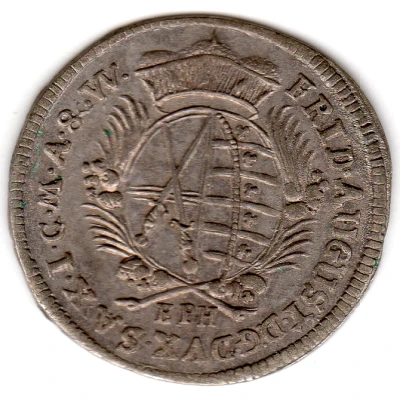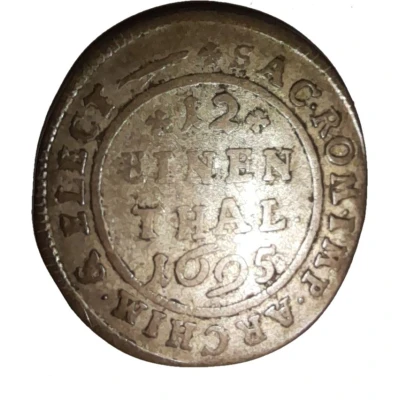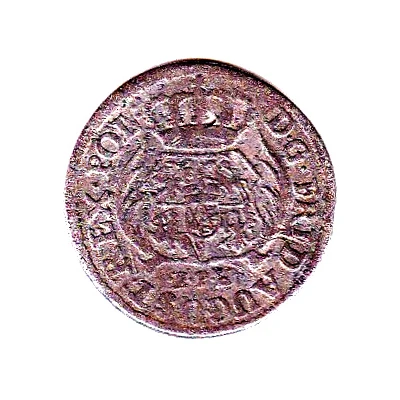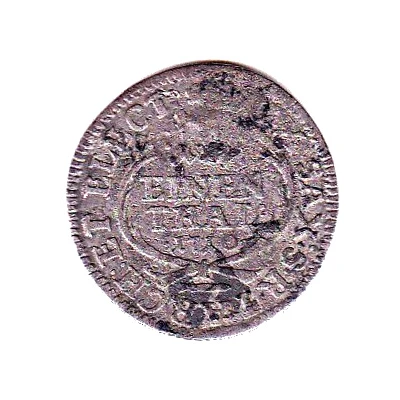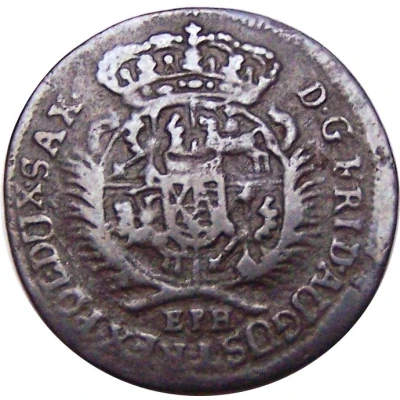
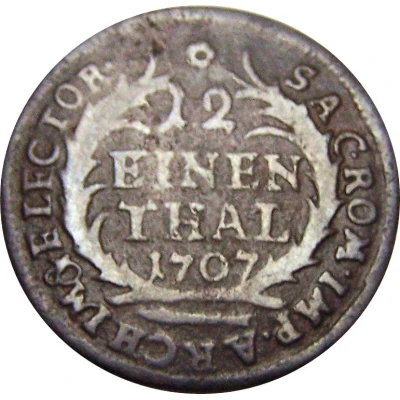

© Purzelgnom
1⁄12 Thaler - Frederick August I
| Billon | 2.9 g | 25 mm |
| Issuer | Electorate of Saxony (Albertinian Line) (German States) |
|---|---|
| Issuer | Electorate of Saxony (Albertinian Line) (German States) |
| Prince elector | Frederick Augustus I (Friedrich August I) (1694-1733) |
| Prince elector | Frederick Augustus I (Friedrich August I) (1694-1733) |
| Type | Standard circulation coin |
| Type | Standard circulation coin |
| Years | 1701-1709 |
| Years | 1701-1709 |
| Value | 1⁄12 Thaler |
| Value | 1⁄12 Thaler |
| Currency | Thaler (1493-1805) |
| Currency | Thaler (1493-1805) |
| Composition | Billon |
| Composition | Billon |
| Weight | 2.9 g |
| Weight | 2.9 g |
| Diameter | 25 mm |
| Diameter | 25 mm |
| Shape | Round |
| Shape | Round |
| Orientation | Medal alignment ↑↑ |
| Orientation | Medal alignment ↑↑ |
| Demonetized | Yes |
| Demonetized | Yes |
| Updated | 2024-10-05 |
| Numista | N#38754 |
|---|---|
| Rarity index | 78% |
Reverse
Script: Latin
Lettering:
SAC.ROM.IMP.ARCHIM.ELECT
12
EINEN
THAL
1707
Comment
Augustus II the Strong (1670-1733) was Dux and Princ-Elector of Saxony (1697-1733), under the name Friedrich August I he was elected as King of Poland & Grand Duke of Lithiania (1697-1706, 1709-1733) (Personal Unia). August had to pass temporary the Polish throne to Stanislav when Swedish Impire occupied Warsaw and won the Battle of Fraustad. Later, in 1709 Russian Imperor Peter won the Battle of Poltava against Swedes and then August was re-assigned to Polish throne again under protection of the Russian Impere. During Saxonian-Polish-Lithianian Unia many Polish and Saxonian coins were minted of the same type.Interesting fact
One interesting fact about this coin is that it was minted during a time of great economic and political change in Europe. The Electorate of Saxony, where the coin was minted, was a powerful state in the Holy Roman Empire, and Frederick August I was one of its most influential rulers. The coin's minting was likely a response to the growing need for currency in the region, as trade and commerce were expanding rapidly during this time. Despite its small denomination, the 1/12 Thaler was an important part of the local economy and would have been used in everyday transactions by people from all walks of life.
